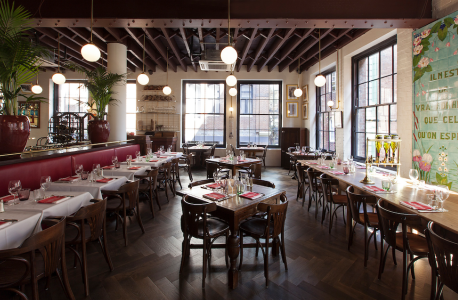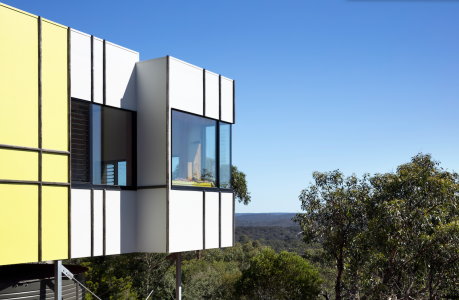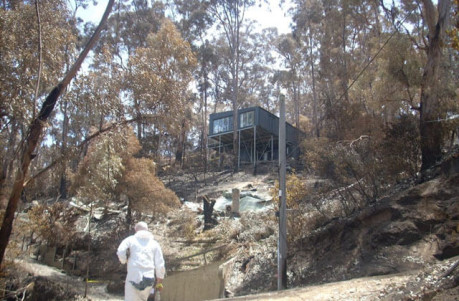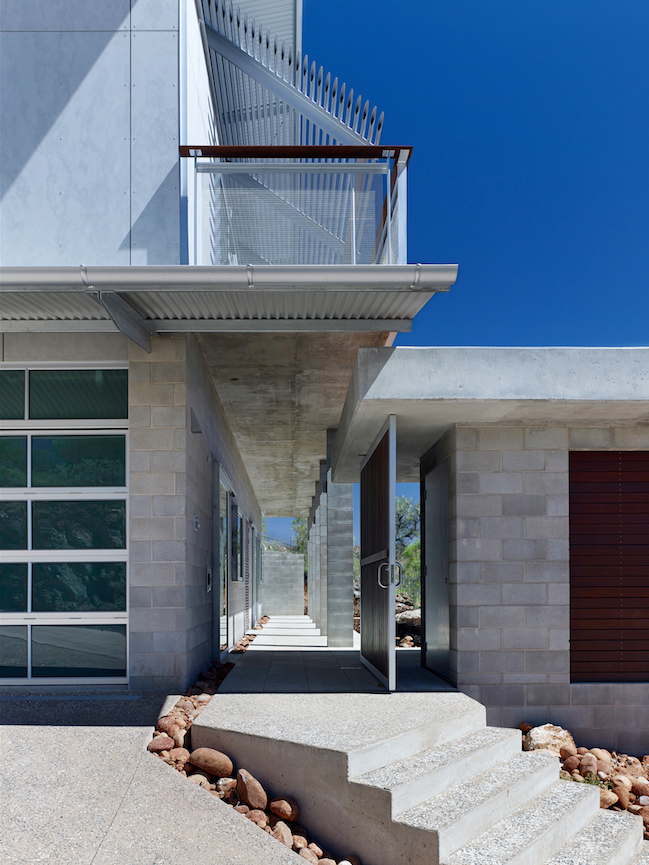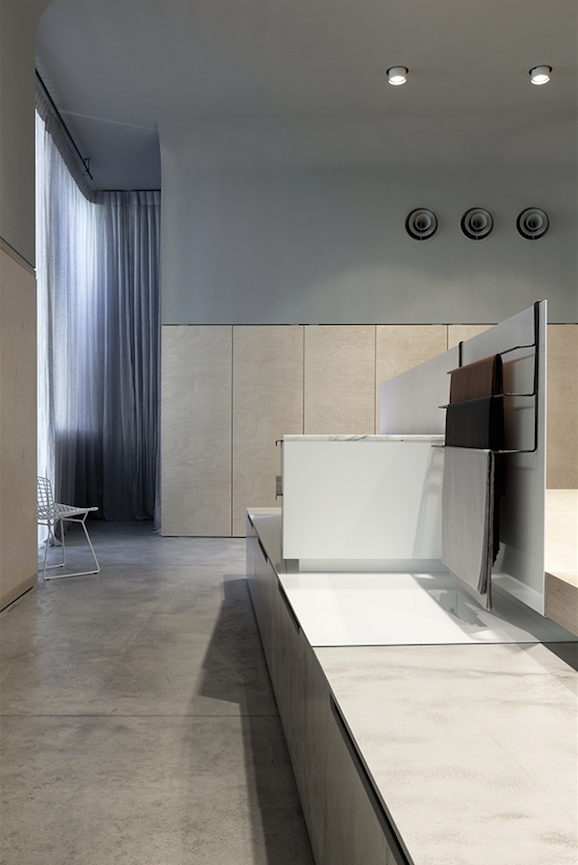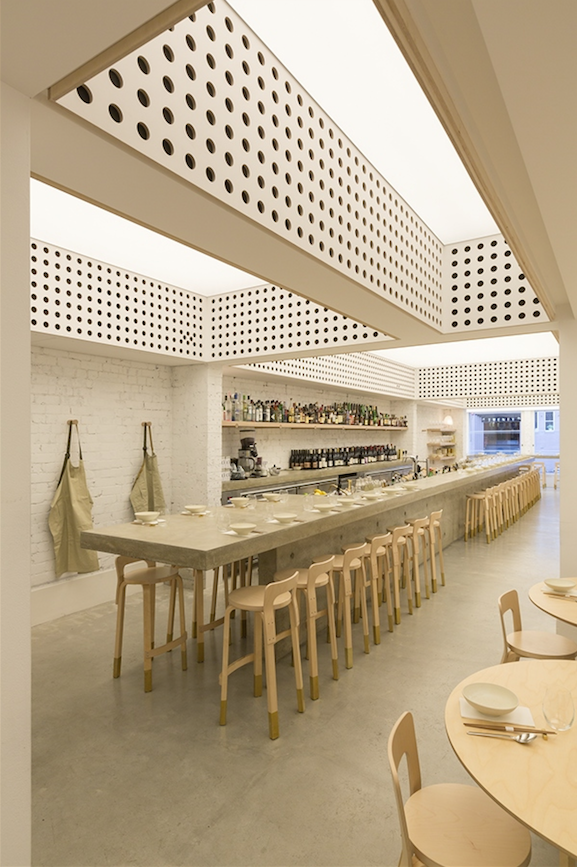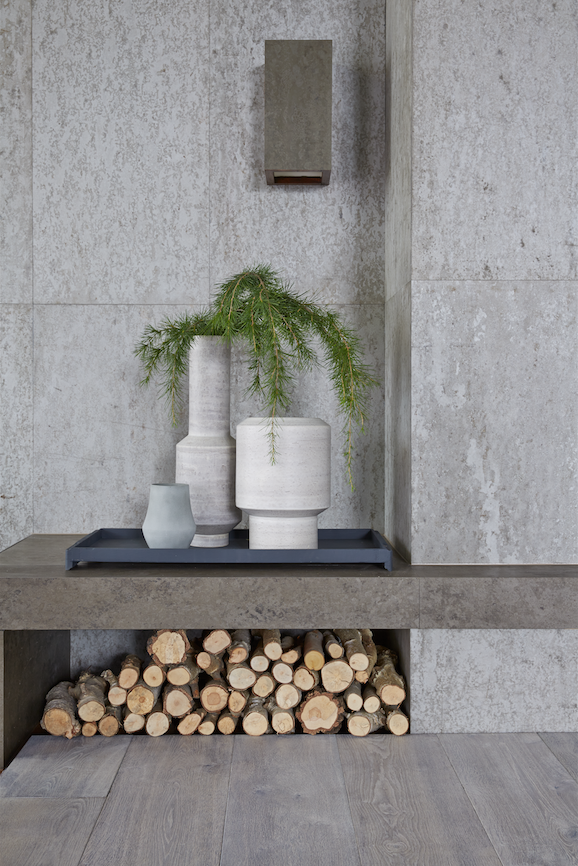
Brutalist Beauty: concrete takes on a new life
Brutalist Beauty: concrete takes on a new life
Share
“Concrete gets a hard time of it,” says architect Nick Tobias, no pun intended. “People think it’s cold and austere – but in fact, just like any other material it can be warm, sensual, inviting.” And, as a bonus, “it sits really well within the natural environment.”
Tobias should know. After two decades in the trade he’s made something of a name for himself as a sensitive modernist, readily blending a material palette that encompasses rich timbers, pristine glass panels and variously textured concrete into houses of a rigorously pared-down elegance. His latest project, a family home at the tip of North Bondi, is a five-storey concrete grid that sits poised above the rocks of Ben Buckler headland.
Surprisingly, despite the austere lines of its stacked balcony voids, it sits harmoniously with the landscape. “The secret,” says Tobias, “is in the subtle tinting of the concrete to echo the colours of the surrounding rocks.” What’s more, despite the ravages of salt water and air, the concrete doesn’t need painting – and will never peel.
Concrete has been around since Roman times, when it was used to create the soaring aqueducts and other monumental structures that would ensure the Empire’s longevity. It reached its apotheosis in the Parthenon, an icon of design to this day. Completed under the Emperor Hadrian around 126 AD, its unreinforced concrete dome is still the largest in the world almost 2000 years later. Standing beneath the 43-metre high oculus, open to the sky, is to understand the majesty of concrete at its most refined.
The material derived its negative image from the Brutalist movement of the 1960s. That loaded term derives not so much from the harshness of the style but from the French words for raw concrete – béton brut. It was a style largely favoured by governments and institutions (banks, museums, mausoleums and the like) wishing to convey a solidity of image, a permanence of mission, a stoicism of pedigree. Much of Walter Burley Griffin’s planned Canberra – most notably the High Court of Australia and National Gallery of Australia designed by Colin Madigan (Edwards, Madigan, Torzillo and Partners) – adhere to the Brutalist canon. The demolition of John Andrews’ majestic Cameron Offices, Belconnen, in 2007, marked the end of an era.
Lately, though, concrete has been experiencing something of a renaissance, particularly in the residential sector, as homeowners warm to its utilitarian charm and innate sense of permanence, not to mention its low maintenance allure. Often, clients are inspired by its deployment in the hospitality sector, where its easy care and wash-down character, has made concrete a perennial favourite.
Architect George Livissianis has used concrete to great effect in The Apollo and Cho Cho San restaurants, both in Potts Point, Sydney. At The Apollo, Livissianis has deployed concrete in sheets, moulded around distressed walls to conceal wiring, pipes and other utility conduits. Shaded a soft mushroom, it creates an intimate shell within the existing structure. Across the road at Cho Cho San, off-form concrete has been poured to create an almost eight-metre long bar. “We shaped and hand-finished it with a trowel, to arrive at a smooth, satiny effect,” he says. “You can get a lot of warmth out of an apparently cold material that way.”
While poured concrete allows for a totally bespoke approach to a space, Livissianis points to new developments in concrete panelling as perhaps more appropriate to a domestic setting. “When I first began using panelling 10 years or so ago, it was quite unusual to see it used as a finish.” You can see it now used to great advantage in his interiors for fashion brand, Jac+Jack. “Increasingly, manufacturers are developing concrete panelling as a finished product,” he says. “That’s most definitely in response to rising demand.”
At Royal Oak Floors, specialist in concrete panels, Anne Plumb notes a marked rise in interest in the material. “At this stage,” she notes, “it’s most often used to create a feature wall. The various textures and finishes can be personalised, allowing for a unique interior.” What’s more, a concrete wall is probably the easiest maintenance finish on the market today.
In his role as host of The Great Australian Home, a new series to air on Foxtel later this year, Nick Tobias visited many homes around the country, including a concrete house in Alice Springs. Tobias says the house is exemplary in the way it employs thermal mass – storing heat during the day to slowly distribute during the cold desert nights. “Oriented correctly, a concrete house acts as a heating and cooling unit,” he says, “cross breezes acting to cool it down during the day, dispersed heat subtly heating it at night. What’s more, using concrete is the closest an architect gets to sculpture.”
Lead image: The view from Deepwater House overlooking Ben Buckler, designed by Nick Tobias and project architect John Richards of Tobias Partners. Photo by Justin Alexander.
Subscribe to MEZZANINE at shop.niche.com.au or digitally through Zinio.
You Might also Like
